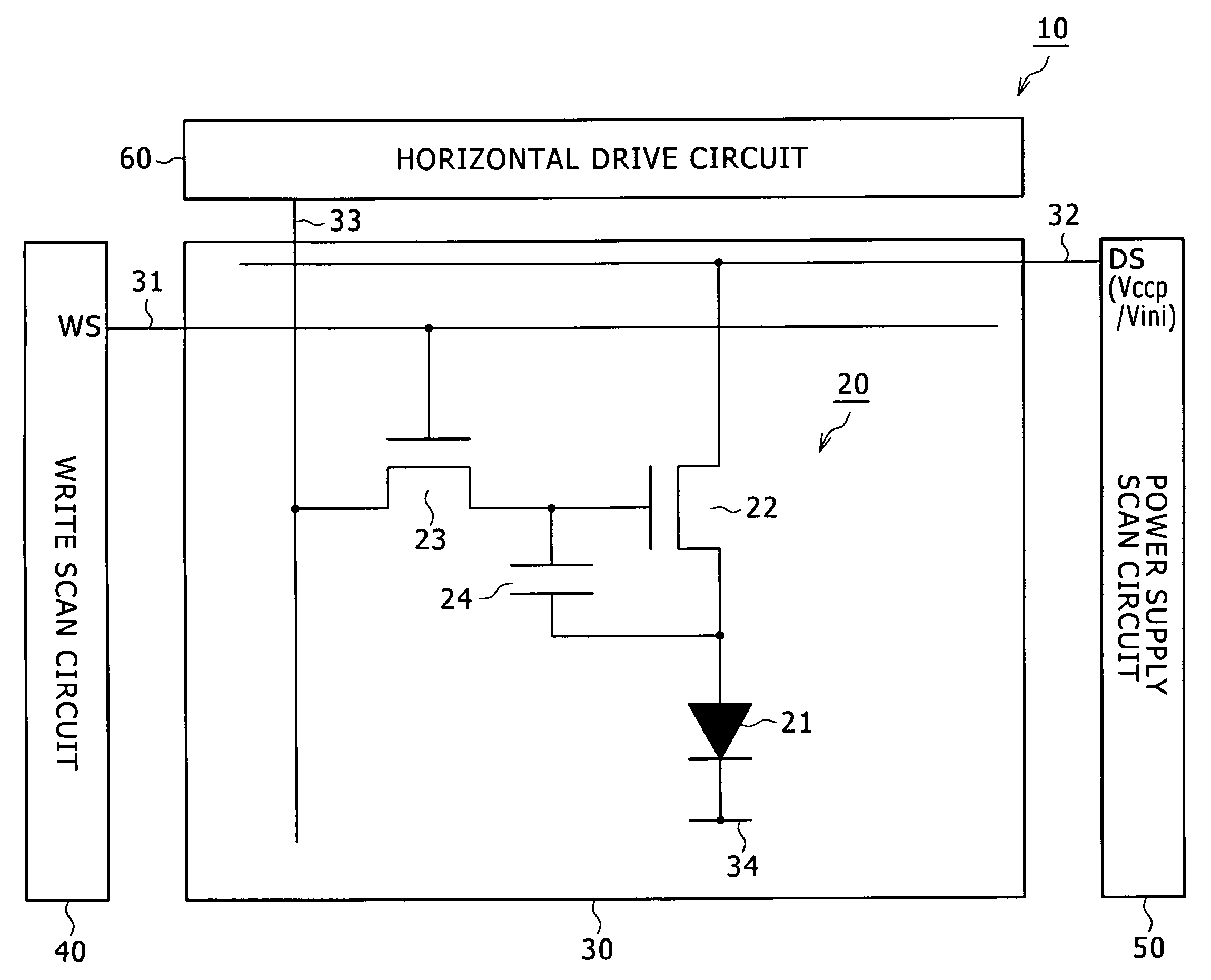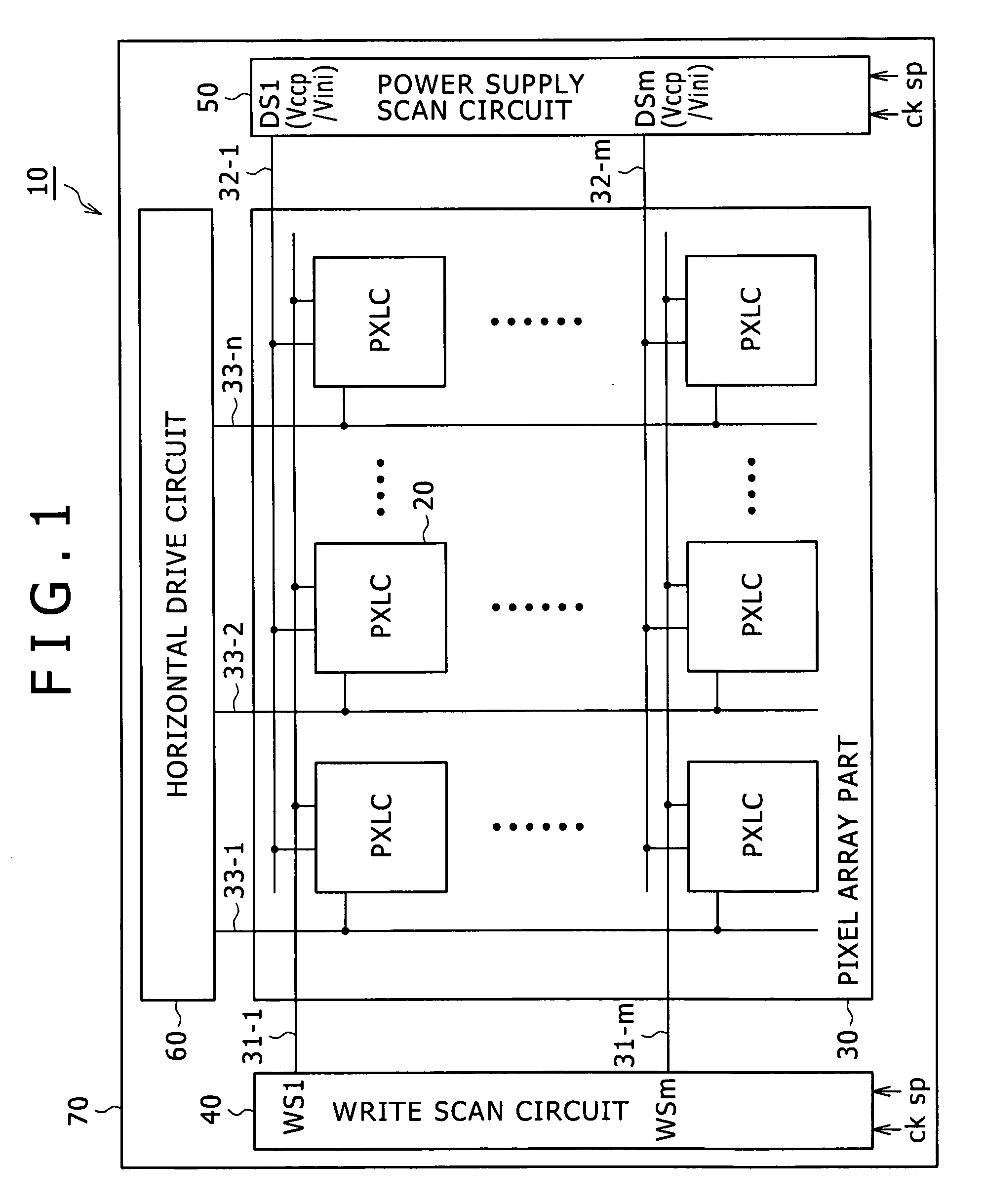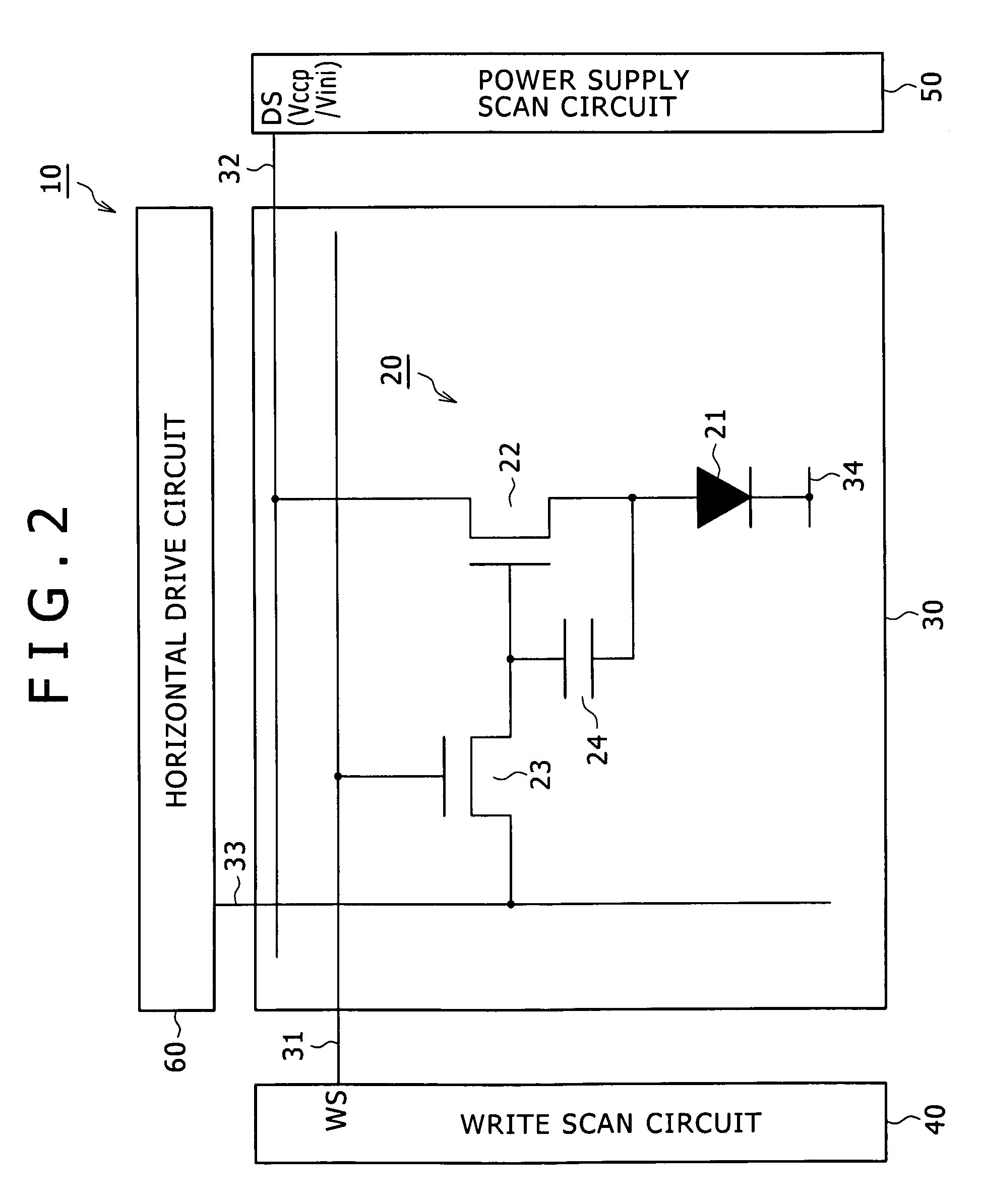Display, method for driving display, and electronic apparatus
- Summary
- Abstract
- Description
- Claims
- Application Information
AI Technical Summary
Benefits of technology
Problems solved by technology
Method used
Image
Examples
working example
[0130]A specific working example will be described below. FIG. 13 is a sectional view along line A-A′ in FIG. 12, showing the structure of the holding capacitor 24 according to one working example of the present invention. In FIG. 13, the same part as that in FIG. 3 is given the same numeral.
[0131]As shown in FIG. 13, the holding capacitor 24 is formed by using the second electrode 24B, the first electrode 24A, and the anode electrode 205 of the organic EL element 21. The second electrode 24B is formed of a pattern of the first metal layer on a transparent insulating substrate such as a glass substrate 201. The first electrode 24A is formed of a pattern of the second metal layer disposed over the second electrode 24B with the intermediary of an insulating film 202. The anode electrode 205 is formed of a pattern of the third metal layer disposed over the first electrode 24A with the intermediary of an insulating protective film 211.
[0132]Of the anode electrode 205 of the organic EL e...
working examples
Other Working Examples
[0144]In the above-described working example, the insulating planarization film 203 is removed from the area through which the first electrode 24A faces the third electrode 24C, as a preferred mode of the embodiment. However, as shown in FIG. 16, the insulating planarization film 203 does not necessarily need to be removed from this area. Even in the case of FIG. 16, the second capacitor 24-2 having the capacitance corresponding to the distance d2, which is equivalent to the sum of the film thickness of the insulating planarization film 203 and the film thickness of the insulating protective film 211, can be formed between the first electrode 24A and the third electrode 24C.
[0145]Furthermore, by making an electric connection in such a way that the second capacitor 24-2 is connected in parallel to the first capacitor 24-1, as described above, the capacitance Cs of the holding capacitor 24 arising from the parallel connection between the first capacitor 24-1 and ...
modification examples
[0146]In the above-described embodiment, as an example, its feature is applied to the organic EL display 10 having the pixel circuit 20 with the circuit configuration that includes the drive transistor 22 for driving the organic EL element 21, the write transistor 23 for sampling the signal voltage Vsig of the video signal and writing it in the pixel, and the holding capacitor 24 that is connected between the gate and source of the drive transistor 22 and holds the signal voltage Vsig written by the write transistor 23. However, the present invention is not limited to this application example.
[0147]The embodiment can be similarly applied also to organic EL displays having any of the following pixel circuits: a pixel circuit having a switching transistor that is connected between the drive transistor 22 and a power supply line and operates to selectively supply drive current from the power supply line to the drive transistor 22; and a pixel circuit further having a switching transist...
PUM
 Login to View More
Login to View More Abstract
Description
Claims
Application Information
 Login to View More
Login to View More - R&D
- Intellectual Property
- Life Sciences
- Materials
- Tech Scout
- Unparalleled Data Quality
- Higher Quality Content
- 60% Fewer Hallucinations
Browse by: Latest US Patents, China's latest patents, Technical Efficacy Thesaurus, Application Domain, Technology Topic, Popular Technical Reports.
© 2025 PatSnap. All rights reserved.Legal|Privacy policy|Modern Slavery Act Transparency Statement|Sitemap|About US| Contact US: help@patsnap.com



